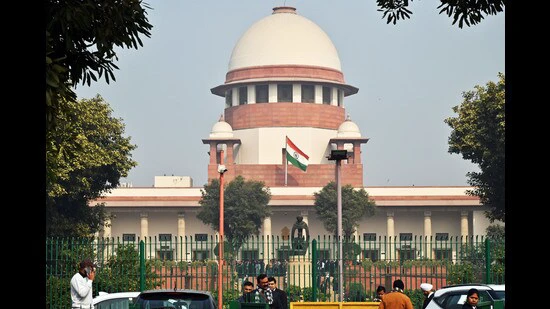The Supreme Court on Wednesday underlined that its focus would now be on framing preventive measures to ensure that incidents such as the recent one, where a 71-year-old lawyer attempted to hurl a shoe at Chief Justice of India (CJI) Bhushan R. Gavai, do not recur within court premises.
A bench of justices Surya Kant and Joymalya Bagchi asked the Supreme Court Bar Association (SCBA) and the Supreme Court Advocates-on-Record Association (SCAoRA) to suggest mechanisms that could help strengthen decorum and safety within the Supreme Court complex.
“Just think of how to prevent such incidents in court premises, bar rooms, etc. All of you please give suggestions. Whatever requires to be resolved, we will resolve it and issue appropriate directions,” the bench told senior advocate Rahul Kaushik, appearing for SCBA — the petitioner in the case that sought contempt proceedings against lawyer Rakesh Kishore for the attempted attack.
The bench said it would consider the associations’ suggestions before issuing directions. On Kaushik’s request, the court also agreed to hear Attorney General R Venkataramani and Solicitor General Tushar Mehta on the next date to assist in identifying practical measures to prevent recurrence of such misconduct.
On October 27, the same bench expressed reluctance to initiate contempt proceedings against Kishore, noting that since the CJI had personally chosen to “forgive and forget” the episode, it may not be appropriate for another bench to pursue action.
“There is no doubt that the act was contemptuous on the face of it. The manner in which he acted cannot be pardoned. The subsequent acts aggravated his contempt. The only issue is that when the CJI has himself pardoned him, should we now initiate any action?” the bench had asked on that day.
Justice Kant had then remarked that giving further attention to such behaviour would only “glorify a person who deserves the contempt of being ignored.” Emphasising that the architecture of contempt allows a judge to exercise discretion in such matters, the bench said that Chief Justice Gavai, “in his glorious magnanimity,” had chosen to let the matter rest.
SCBA president and senior advocate Vikas Singh, however, had urged that the incident was not merely a personal affront but one that damaged the dignity of the institution itself. “Today, jokes and memes are being made. This cannot be allowed to go on because it will bring disrespect and disrepute to the institution,” he submitted.
Solicitor General Tushar Mehta had also cautioned that prolonging the controversy would only amplify it, observing that such material “comes with a shelf life.” The bench had then agreed, noting that “publicity-hungry individuals” and “outrage algorithms” should not be given a platform. “Unfortunately, many portals have become money-spinning ventures. The moment we initiate proceedings, it will be monetised again,” it had observed during an earlier hearing on October 16.
The bench has since reiterated that the court’s priority must be preventive, not punitive — focussed on ensuring security, discipline, and decorum inside courtrooms and bar areas. Its direction to the Bar associations to return with concrete suggestions signals the court’s intent to institutionalise safeguards without lending further visibility to acts of disruption.
The October 6 incident, when Kishore, an advocate later suspended by the Bar Council of India, rushed towards the dais and attempted to remove his shoe before being restrained, had briefly disrupted proceedings before CJI Gavai. The CJI had calmly resumed the hearing, remarking: “Don’t get distracted by all this. These things do not affect me.”
Though condemned across political and professional circles, the CJI later described the episode as “a forgotten chapter.” Justice Kant’s bench now appears determined to ensure that it also becomes a closed one, by fortifying courtroom discipline through preventive action rather than punitive spectacle.
